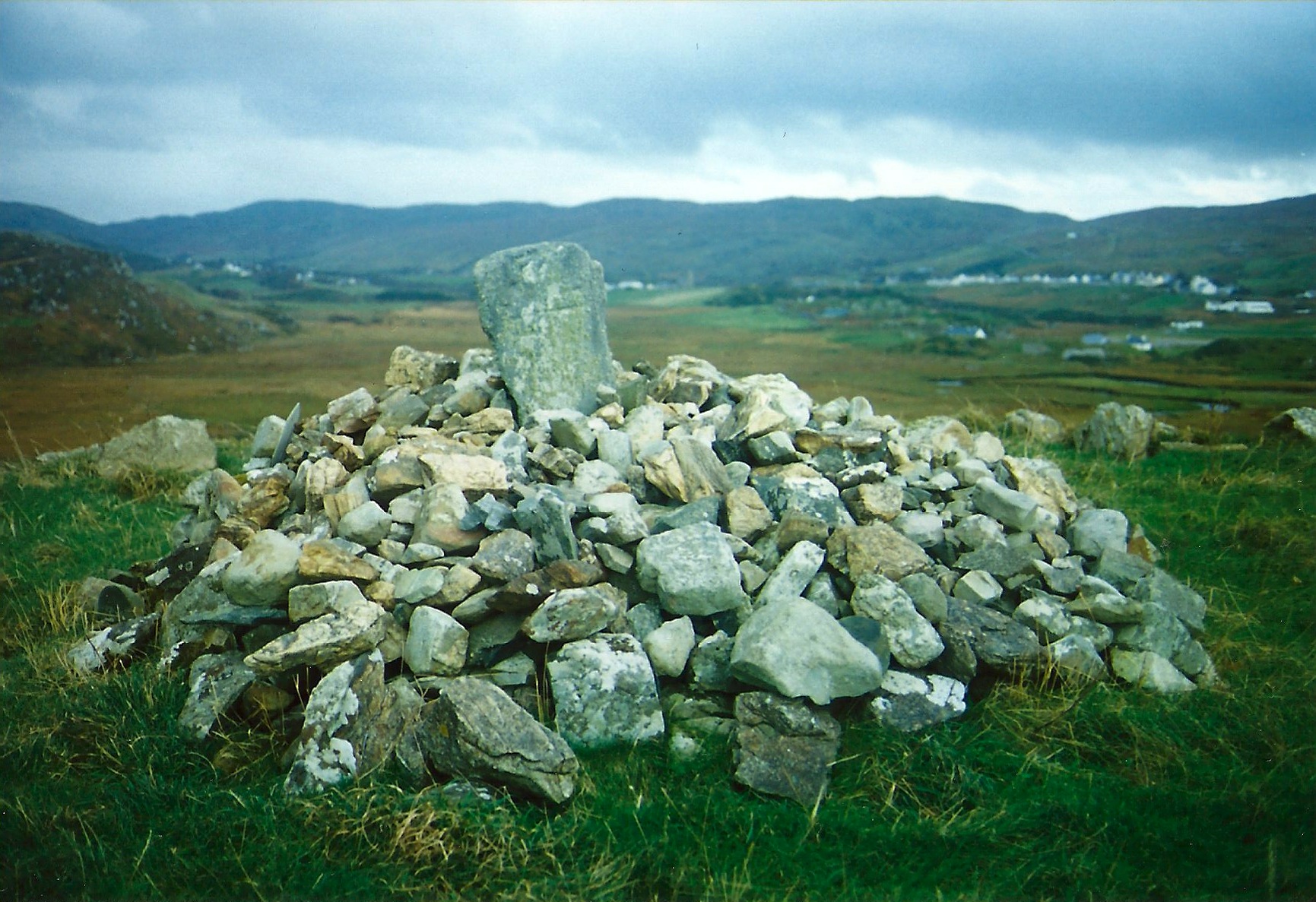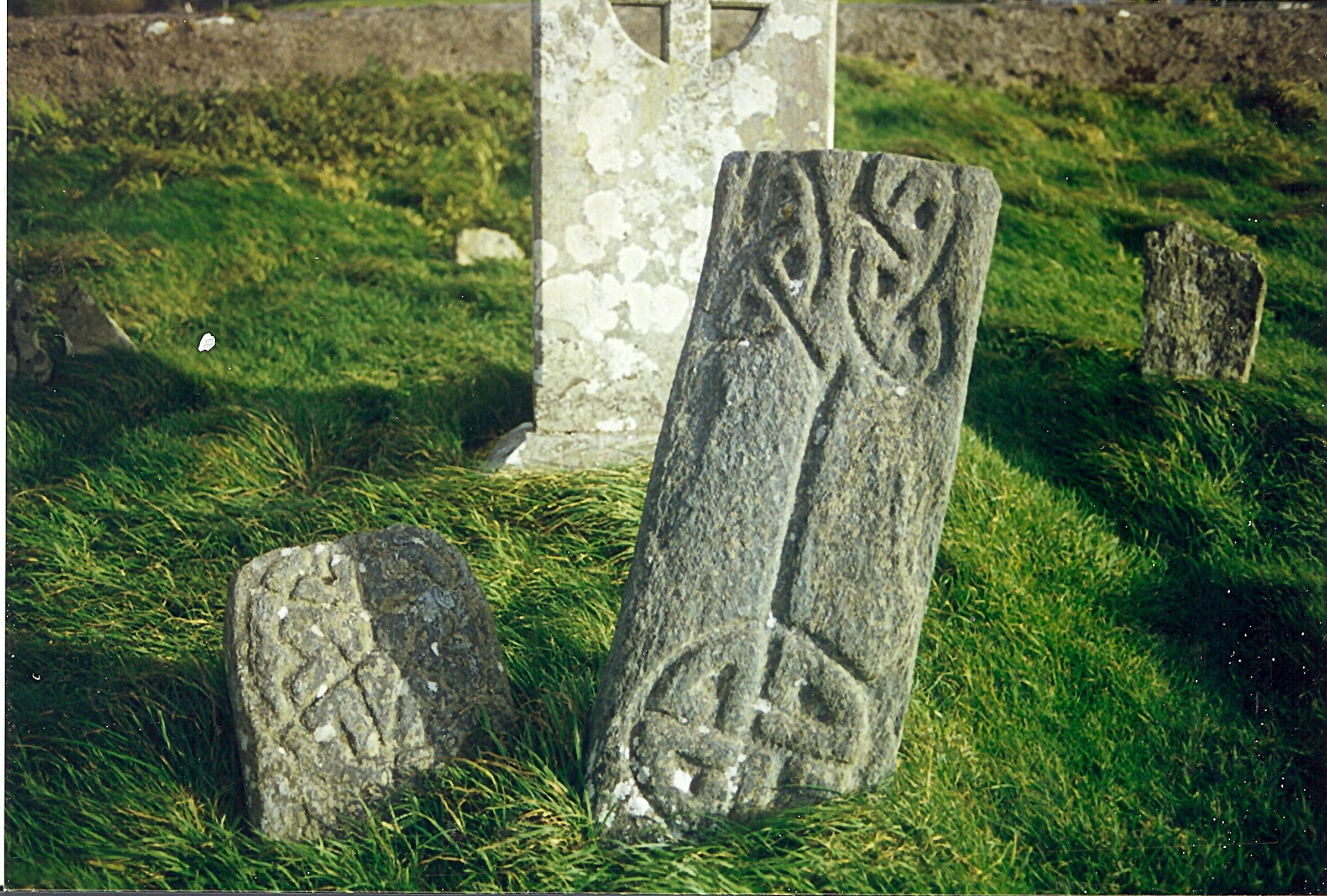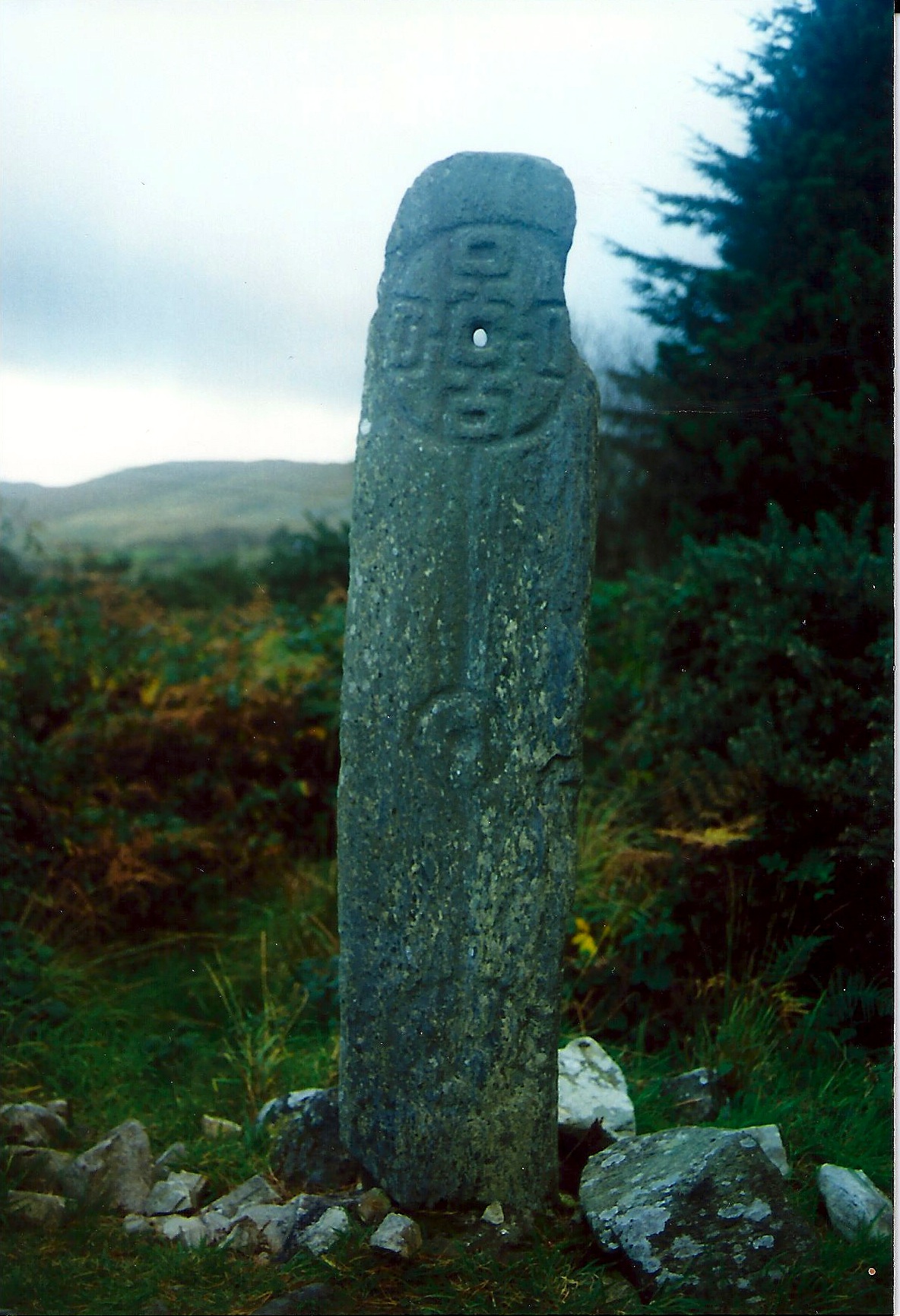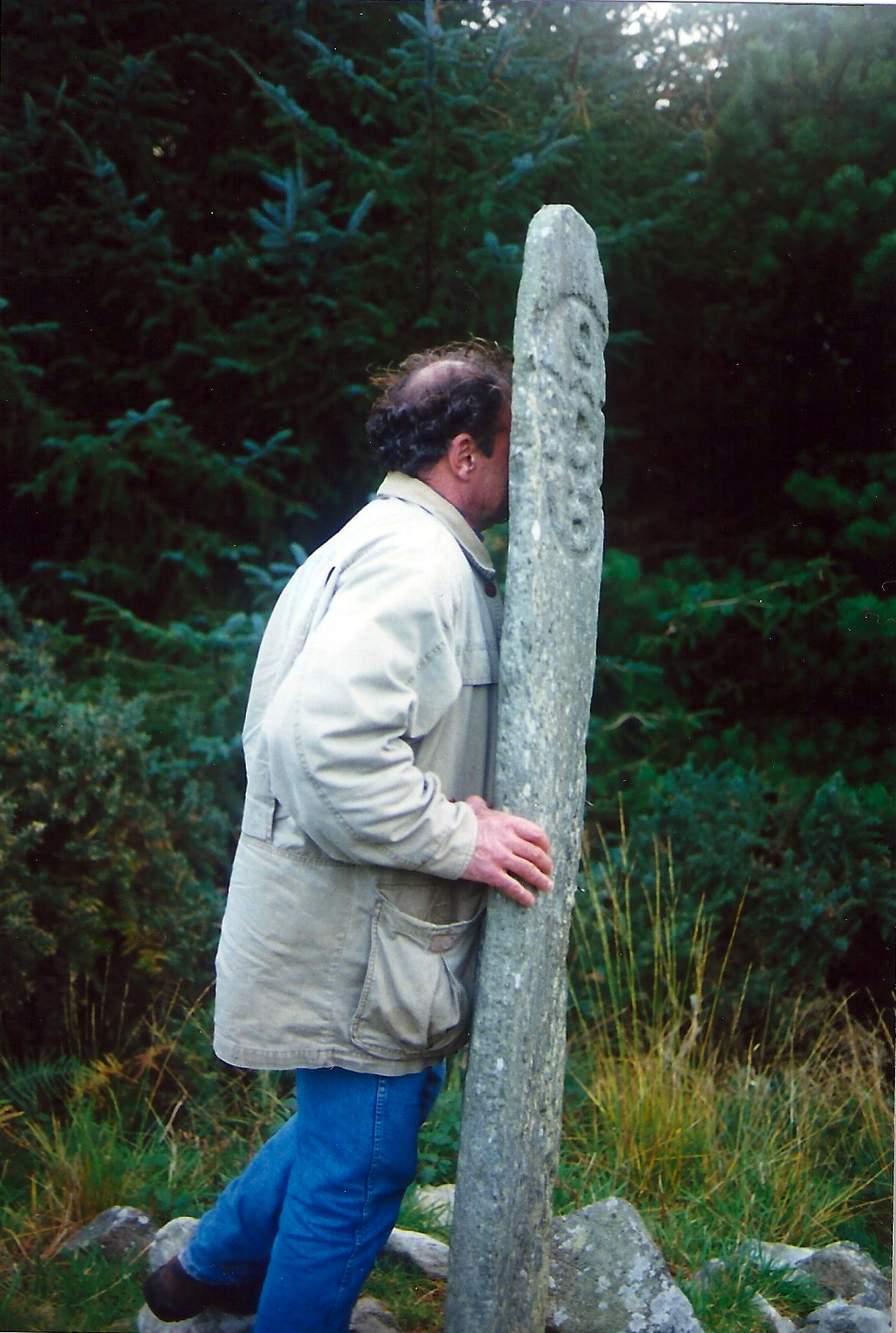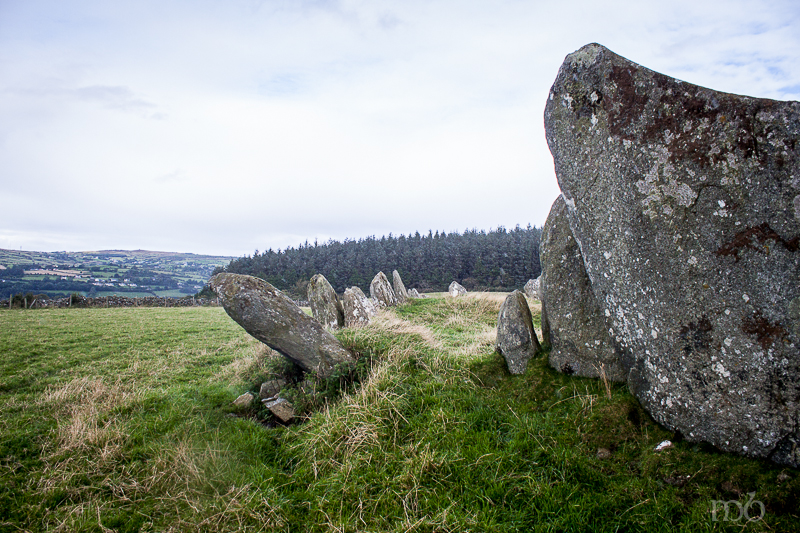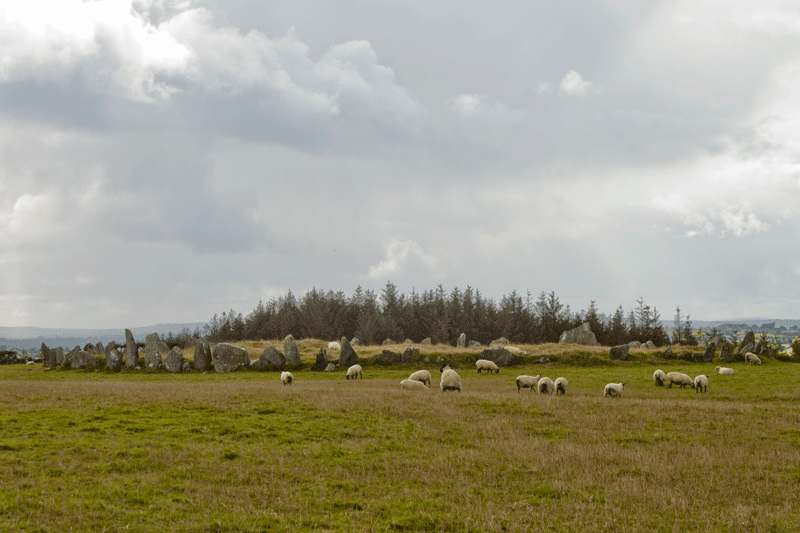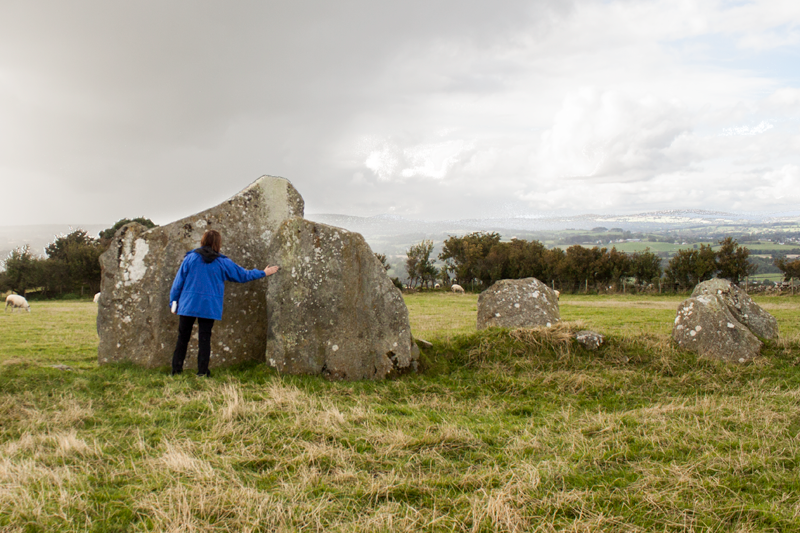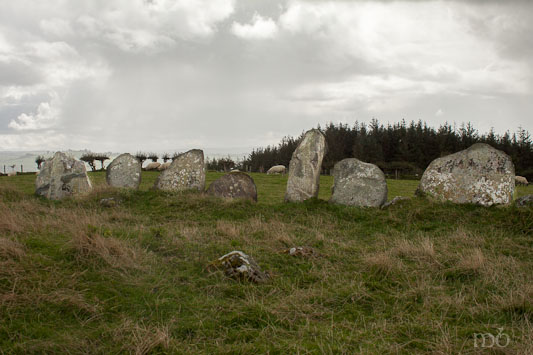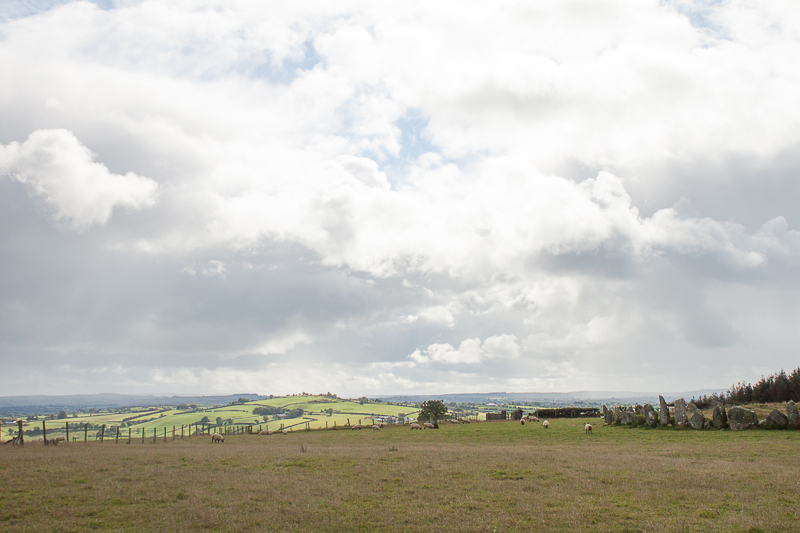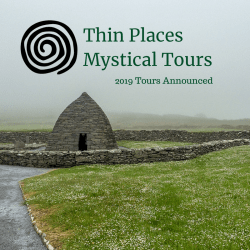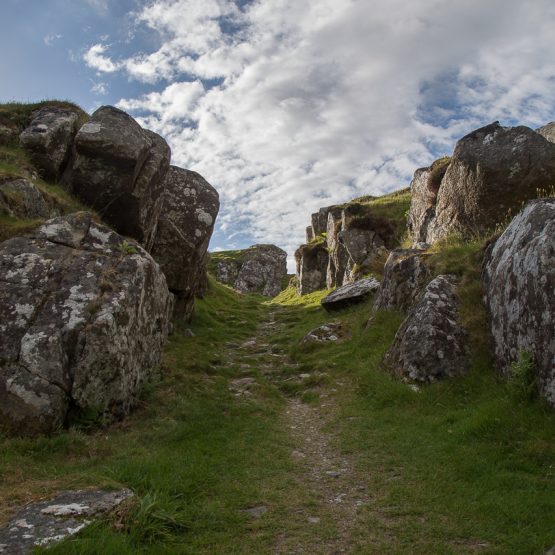St. Columba and Glencolumbkille
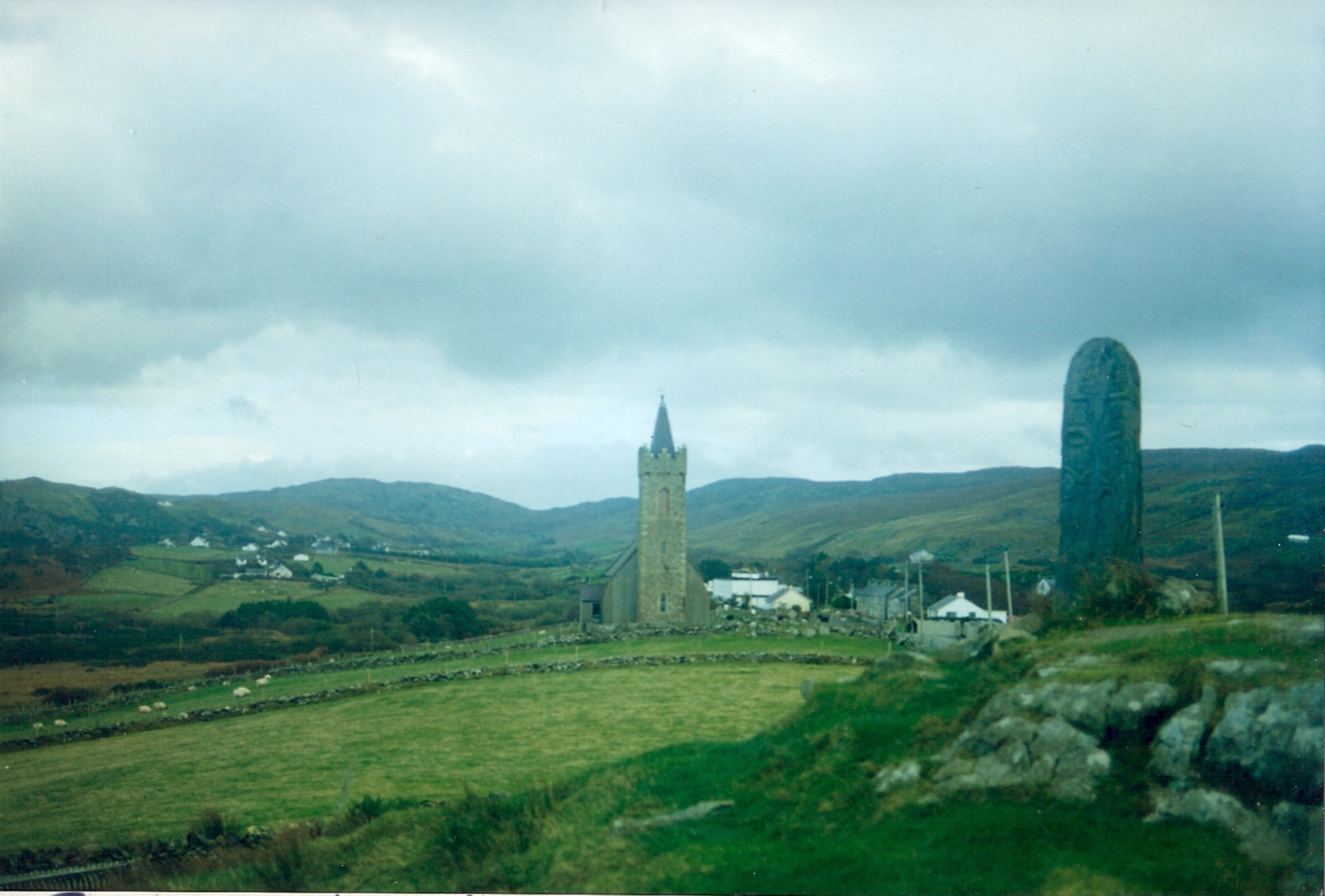 Glencolumkille is a rural parish in southwest County Donegal. It is most known for its pilgrimage that honors the patron saint and protector of Donegal, St. Columba. There are many variations of his name (Columbkille, Colmcille). The Pilgrimage of St. Colmcille, also known as the Turas Cholmcille honor the saint while personally drawing his blessing and strength by walking in his footsteps across a land that was once his home. There are 15 stations scattered throughout an enchanted glen – each marked by a pillar stone or cairn or some type of stone marking.
Glencolumkille is a rural parish in southwest County Donegal. It is most known for its pilgrimage that honors the patron saint and protector of Donegal, St. Columba. There are many variations of his name (Columbkille, Colmcille). The Pilgrimage of St. Colmcille, also known as the Turas Cholmcille honor the saint while personally drawing his blessing and strength by walking in his footsteps across a land that was once his home. There are 15 stations scattered throughout an enchanted glen – each marked by a pillar stone or cairn or some type of stone marking.
My favorite definition for “pilgrim” was written by Paul Elie, found in his book The Life You Save May Be Your Own, a book about great writers and the power they have over us. Paul says, “A pilgrim travels within the context of a story, in order to be changed by the story.” The definition certainly fits the pilgrims who do the Turas in Glencolumkille.
To remember the story of St. Columbkille is to remember a man who was a descendent of the ruling tribe – royalty in his day. A man who was educated and tutored by the best scholars. Columbkille was a leader who could shape meaning from circumstances. He founded more monasteries and monastic communities than any other single Irish saint. But pride got the best of him when he was at his most powerful, and he picked an fight with another saint – St. Finian who had an illustrated psalter. St. Columbkille secretly copied St. Finian’s book so that he would have a copy for himself.
St. Finian was offended and demanded Columbkille’s copy. Columbkille refused saying knowledge gained from books should be shared not coveted, especially when pertaining to God. Finian took the matter to the High King for arbitration and the High King ruled in favor of St. Finian with a famous statement – “To every cow its calf and to every book it’s copy” meaning every calf belongs to its mother and every copy of a book belongs to the original book’s owner. Columbkille was outraged in losing the battle and this disagreement eventually led to Columbkille’s tribe attacking a tribe to the south which led to the slaughter of over 3000 people.
Columbkille was so ashamed to have been the root of so much death and destruction in his native land, that he sent himself into voluntary exile. He sailed from his beloved Derry to Scotland landing with a few followers on the island of Iona where he established a community which flourished into a great seat of learning and spiritual growth. Iona still has a community there and it continues today to draw pilgrims.
So as the pilgrims travel through the station in Glencolumbkille, they reflect on the saint’s life, his strength, his weaknesses and his devotion, and they ask his blessing for own lives. Every station has a ritual, a prayer to be said, a devotion to be made. So that when the turas are all done, the pilgrim has drawn strength from both the story and energy of the land.
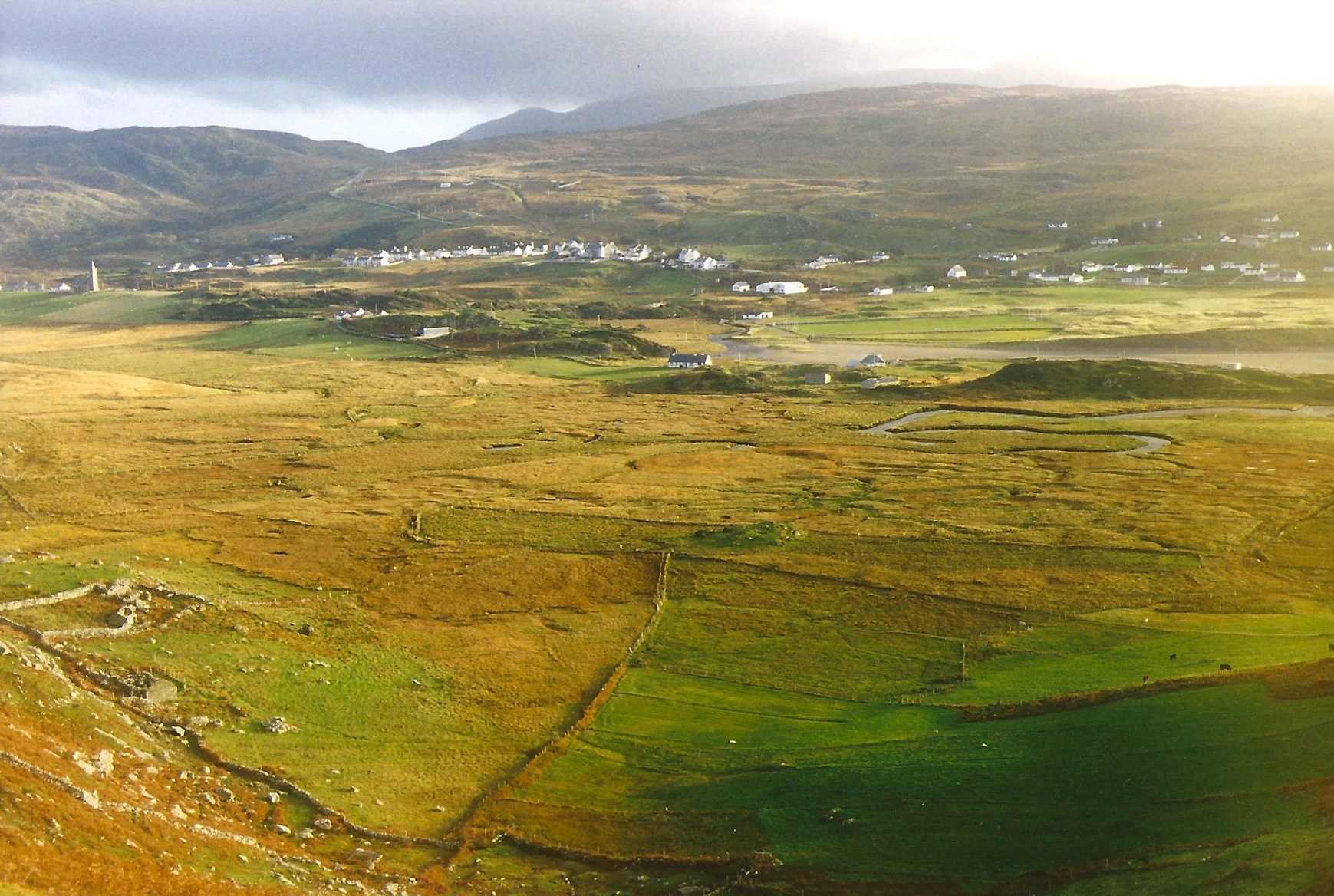 The land has been considered sacred for thousands of years. Devotion and ritual in the glen dates back thousands of years. Portal tombs dating from 2000 BC can be found in the glen as well as court tombs the date to 4000 BC. The land in Glencolumbkille has an energy that early civilizations felt … that has lasted until the present day.
The land has been considered sacred for thousands of years. Devotion and ritual in the glen dates back thousands of years. Portal tombs dating from 2000 BC can be found in the glen as well as court tombs the date to 4000 BC. The land in Glencolumbkille has an energy that early civilizations felt … that has lasted until the present day.
Though Ireland has suffered in recent years with abuses committed by Catholic clergy which has rocked the faith of many, there are still hundreds that come to the glen each year to do the rounds. This kind of joining of devotion, spirit, land and healing never betrays trust.
I visited Glencolumbkille shortly after I married my husband. Our favorite spot was the Stone of Gathering (Turas 9). This tall carved pillar has a hole in the top. The stone was tied to a tradition where engaged couples would intertwine their fingers in the hole while professing their love and commitment to each other before a gathering of community members. There is also a tradition that if you peer through the hole (as Dan is doing in the image above) you will get a glimpse of heaven. The view from where Dan is standing is breathtaking. There is a special energy around this pillar… a kind of loving, warm, peaceful energy.
At the southwestern tip of Glencolumbkille is Slieve League (Sliabh Liag) which is the highest cliff face in Western Europe. The monastic serenity that blankets the entire glen and its scenic surroundings moves from peaceful to powerful – back and forth – and the prayers of the pilgrim mirror that energy.
“…echoes of the centuries’ feet
That moved along the penitential stones
In all thy winds are sweet.
Here came my fathers in their life’s high day
In barefoot sorrow, but God knows the whole:
Not for themselves they fasted, but to lay
Up riches for my soul.”
Glencolumkille and Slieve League are stops on the 2013 Thin Places Mystical Tour of Ireland. Check out the itinerary.
Other Good Webpages on Glencolumbkille and the Turas
Voices from the Dawn – Glencolumbkille Turas
Megalithic Ireland – Glencolumbkille Turas
Your message has been sent
Beltany Stone Circle – Thin Place in Co. Donegal
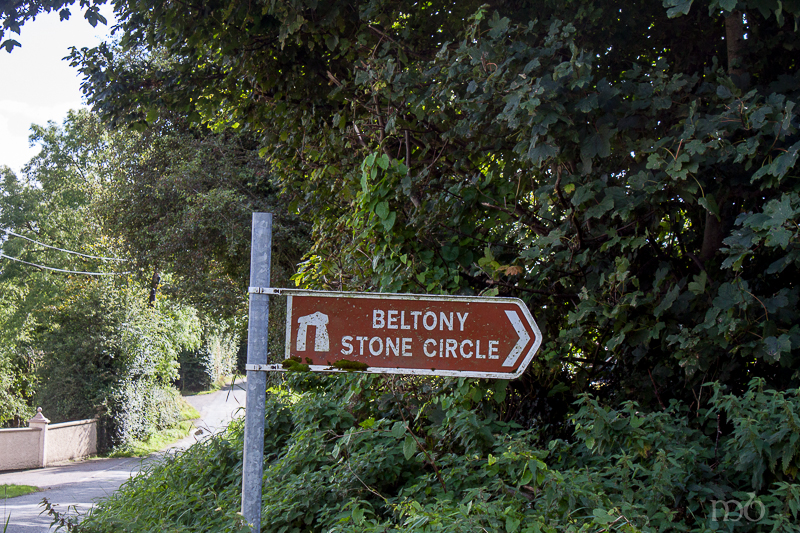 If a thin place is one where the veil between this world and the eternal world is “thin,” then Beltany Stone Circle in County Donegal ranks as one of the thinnest or most mystical sites in all of Ireland.
If a thin place is one where the veil between this world and the eternal world is “thin,” then Beltany Stone Circle in County Donegal ranks as one of the thinnest or most mystical sites in all of Ireland.
The circle dates back to 1400 – 800 BC, and is larger than most found in Ireland having 64 stones averaging 6 ft. in height. The circle measures about 145 feet in diameter. The site was excavated in the early twentieth century and significantly disrupted. Most believe that there were at least 80 stones in the original circle. These stones are orthostats – stones set against a rise or wall. They stand close together hemming in a raised earthen area resembling a kind of kerbing as seen in passage tombs. Some suspect that the circle and its center mounds could have comprised some kind of burial site that may have once been covered with earth. Others think the center “lumpiness” is a result of the disheveled condition the excavators left the site in back in the early 1900s.
The name Beltany is an Anglicization of the Irish word Bealtaine which is the feast of fire or rekindling the sun. Bealtaine festivals are celebrated on May 1st which is also the beginning of summer in the Celtic year. May 1st is the halfway point between the Spring equinox (the day when light and darkness are equal in hours) and the Summer Solstice (the longest day of daylight). The rituals on this day were linked to fire, particularly on hill tops across the landscape. Some believe this was a kind of refueling or re-firing the sun, or a form of worship that called down a blessing on the land and crops from the god of the sun.
The Beltany stone circle is located on Tops Hill. A wooded path (often muddy) leads from a car park to the summit. At the end of the shaded path, the landscape opens wide and in the distance, in a lone field one can see the jagged points of stones in a large stone circle. The transition from path to field feels much like a portal. There is a defined energy in this fields that grows stronger as one approaches the circle.
But there are two interesting stones in the circle that suggest it was used for measuring the seasons using astrological alignments, and possibly used for rituals related to the sun or sun god. These would be the tallest stone in the circle and the widest – the triangular stone with cup markings.
Most of the stones are tall and cylindrical in shape listing to one side or the other of the circle line. They resemble jagged old teeth. But the wide triangular stone, stands out. It’s special and immediately draws the eye. Additionally, it has cup markings on the inner face carved into it long ago. It faces ENE and stands directly across the circle from the tallest stone (about six feet high) which points WSW. When the two stones align they point to the summit of a hill about five miles away in Tullyrap – a summit where the sun rises directly over on May 1st – the feast of Bealtaine.
There are also noticeable outliers which may also have had a significance. According to Cary Meehan in her book A Travelers Guide to Sacred Ireland, “a line from the tallest stone in the south western part of the circle taken through the outlier, goes 28 miles south east to Bessy Bell Hill in Tyrone. Another line could run through the circle to Croaghan Hill, 4 miles ESE. ”
So Beltany Stone Circle could have been a passage tomb(s) or a tool for charting the agricultural seasons. It may have been aligned with other sacred sites. We know it was used for celebrations specifically linked to Bealtaine. Three carved stone heads dating to the Iron Age were found at Beltany during the excavation. They indicate that the circle was used for many centuries.
Today, though it’s been disrupted and disheveled, it still sits in place – marking the spot so many believed to be sacred. There site is still charged with energy. Even in the pouring rain, it offers a sense of thinness, of being in two worlds at one time.
Beltany Stone Circle is on the Images in the Landscape Tour in 2018.
Books to Read Before Travel to Ireland
Before traveling to Ireland it’s good to have some background on the country, its landscape, its heritage and its people. For our tours which focus on “thin places” or mystical sites, its also good to have an understanding of the legends, the lore and the rituals that compelled people to build cairns, stone circles, and mark sacred places.
Here are some books that helped me learn about mystical Ireland.
FICTION
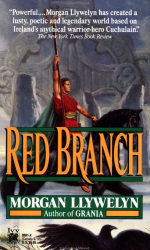 Red Branch by Morgan Llywellyn – this is the best book I’ve read that describes the Irish trilogy. It’s the story of Cuchulain, the Hound of Ulster and the Knights of the Red Branch that were based in Emain Macha – now Armagh, specifically the Navan Fort both of which are sites on our tour. It’s an entertaining saga and one that taught me a lot about Irish history and lore.
Red Branch by Morgan Llywellyn – this is the best book I’ve read that describes the Irish trilogy. It’s the story of Cuchulain, the Hound of Ulster and the Knights of the Red Branch that were based in Emain Macha – now Armagh, specifically the Navan Fort both of which are sites on our tour. It’s an entertaining saga and one that taught me a lot about Irish history and lore.
“Powerful . . . A lusty, poetic and legendary world based on Ireland’s mythical warrior-hero Cuchulain.” according to the New York Times Book Review. In a land ruled by war and love and strange enchantments, Cuchulain — torn between gentleness and violence, haunted by the croakings of a sinister raven — fights for his honor and his homeland and discovers too late the trap that the gods have set for him in the fatal beauty of Deirdre and the brutal jealousy of King Conor.
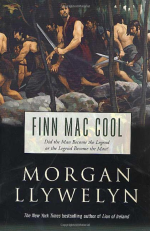 Finn Mac Cool by Morgan Llywellyn – another fictional account about the escapes of an Irish giant. He’s associated with many of the sites we’ll visit including the Giant’s causeway. Another great account of Ulster lore and legend.
Finn Mac Cool by Morgan Llywellyn – another fictional account about the escapes of an Irish giant. He’s associated with many of the sites we’ll visit including the Giant’s causeway. Another great account of Ulster lore and legend.
Somewhere in the shadowy borderland between myth and history lies the territory of Finn Mac Cool. Mightiest of the Irish heroes, leader of the invincible army of Fianna, he was a man of many faces: warrior, poet, lover, creator, and destroyer. Finn Mac Cool is a man taken from one of the lowest classes of Irish society, driven by ambition and strength to rise above his birth and bring new respect and status to his people. He had it all and lost it all, but in the end he gained immortality. Finn Mac Cool is a novel of sweeping historical grandeur and awesome adventure.
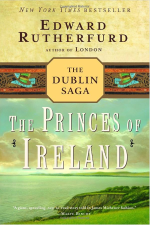 Princes of Ireland by Edward Rutherford – gives a great account of Irish history starting with Cuchulain all the way to the Cromwellian invasion, Great Hunger and Eastern Uprising. It’s a long book, but it’s gives the reader a great background.
Princes of Ireland by Edward Rutherford – gives a great account of Irish history starting with Cuchulain all the way to the Cromwellian invasion, Great Hunger and Eastern Uprising. It’s a long book, but it’s gives the reader a great background.
From the internationally bestselling author of London and Sarum — a magnificent epic about love and war, family life and political intrigue in Ireland over the course of seventeen centuries. Like the novels of James Michener, The Princes of Ireland brilliantly interweaves engrossing fiction and well-researched fact to capture the essence of a place.
NON-FICTION
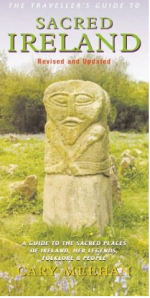 A Traveler’s Guide to Sacred Ireland by Cary Meehan – my all-time favorite book on thin places in Ireland. This is a guide book to mystical sites, sacred places and their associations with the Irish legends, folklore and people. It’s divided by provinces and counties. Hundreds of sites are listed.
A Traveler’s Guide to Sacred Ireland by Cary Meehan – my all-time favorite book on thin places in Ireland. This is a guide book to mystical sites, sacred places and their associations with the Irish legends, folklore and people. It’s divided by provinces and counties. Hundreds of sites are listed.
This amazing book is the result of years of research of historical and archeological detail, legend and folklore, and current information on earth energies for each sacred site. Before the author’s rediscoveries, most of the vast number of ancient sites were unknown or almost forgotten except by locals. Features: *Simple wells and stones *Local pilgrimage spots *Holy mountains, lakes and rivers *Sites created by the Auld Giants *Pre-Celtic Temples *Ancient churches and round towers
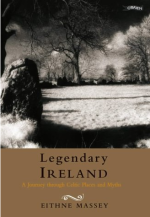 Legendary Ireland by Eithne Massey – an entertaining account of Ireland’s myths and legends. This is a book you’ll reach for time and time again. It addresses both the places and the myths behind them. Many of the sites we’ll be visiting are featured in this book.
Legendary Ireland by Eithne Massey – an entertaining account of Ireland’s myths and legends. This is a book you’ll reach for time and time again. It addresses both the places and the myths behind them. Many of the sites we’ll be visiting are featured in this book.
This title visits 28 richly atmospheric sites and tells the mythological stories associated with them. Woven into these landscapes are tales of love and betrayal, greed and courage, passion and revenge, featuring the famous characters of Celtic lore, such as Cu Chulainn, the children of Lir and Queen Maeve. The historical and archaeological facts, and the folk traditions of each ancient site are explored. Some are famous such as Tara and Newgrange; others are less well known but equally captivating such as the Beara Peninsula in Cork. In a world where many have lost touch with the land and their past, the legendary Irish landscape still survives and the stories are never quite over as long as there are people to tell them.
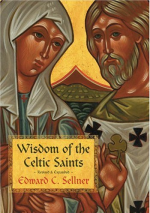 Wisdom of the Celtic Saints by Edward Sellner – A quick study of some of Ireland’s greatest saints, their insights, their contributions and the benefit of being a pilgrim or traveler moving within the context of a story.
Wisdom of the Celtic Saints by Edward Sellner – A quick study of some of Ireland’s greatest saints, their insights, their contributions and the benefit of being a pilgrim or traveler moving within the context of a story.
Faithfully presenting the lives and legacies of twenty Celtic saints of the sixth to ninth centuries, Edward Sellner reveals their wisdom in a way that can be understood and appreciated by contemporary readers. The stories recounted range from the well-known — Patrick, Brendan, Brigit — to those less likely to be familiar — Monesan, Samthann and Aidan. Vivid portrait illustrations by Susan McLean-Keeney add to the prayerful beauty of the book.
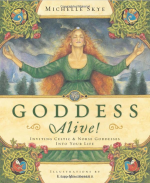 Goddess Alive! by Kris Waldherr – gives great insight into the Celtic and Norse goddesses and the sites they are associated with. This book also offers insight into what thin places are and ways to travel between the two worlds.
Goddess Alive! by Kris Waldherr – gives great insight into the Celtic and Norse goddesses and the sites they are associated with. This book also offers insight into what thin places are and ways to travel between the two worlds.
The changing of the seasons, phases of the moon, even our personal experiences-all are reflections of the Divine Feminine. Create a stronger connection to the sacred world and your own divinity by welcoming these thirteen powerful Celtic and Nordic goddesses into your life.
As you make your way through a transformative year, know that each goddess has a different energy and a unique lesson to teach you. Starting with the Winter Solstice, the eight seasonal Sabbats and five faces of the moon provide the guideposts along your path. Through ritual, invocation, guided meditations, and magical activities, you’ll explore each goddess’s unique mythology and discover her message for your life.
Read More Books to Read for Travel to Ireland and Best Ireland Guidebooks 2015
